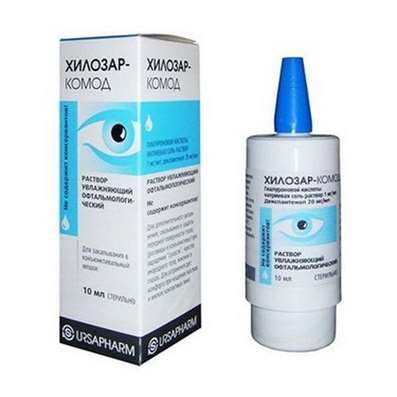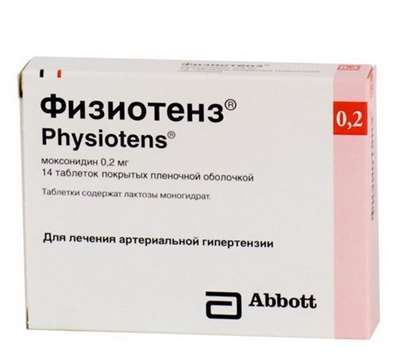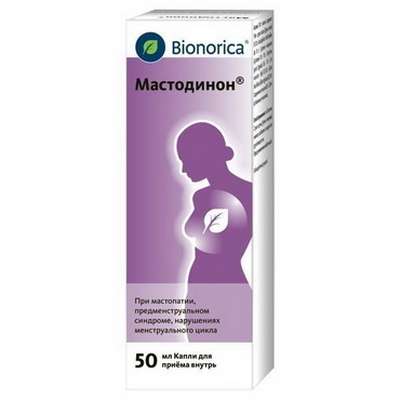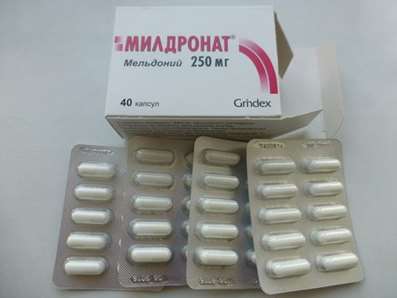Instruction for use: Clomipramine
I want this, give me price
Latin name: Clomipraminum (genus. Clomipramini)
Chemical name
3-Chloro-10,11-dihydro-N, N-dimethyl-5H-dibenz [b, f] azepin-5-propanamine (as hydrochloride)
Gross formula
C19H23ClN2
Pharmacological group:
Antidepressant
The nosological classification (ICD-10)
F20.4 Post-schizophrenic Depression: Depression in the background of schizophrenia
F32 Depressive episode: Adynamic subdepression; Astheno-adynamic subdepressive states; Asthenoadressive disorder; Astheno-depressive disorder; Asthenodepressive state; Astheno-depressive state; Major Depressive Disorder; Vyaloapatichesky depression with retardation; Double Depression; Depressive pseudodement; Depressive illness; Depressive mood disorder; Depressive disorder; Depressive mood disorder; Depressive state; Depressive disorders; Depressive syndrome; Depressive syndrome larviated; Depressive syndrome in psychoses; Depressed masks; Depression; Depression Depletion; Depression with the phenomena of inhibition within the framework of cyclothymia; Depression is smiling; Involutional depression; Involutionary melancholy; Involutional depression; Manic-depressive disorder; Masked Depression; Melancholic Attack; Neurotic depression; Neurotic depression; Shallow Depression; Organic depression; Organic depressive syndrome; Simple depression; Simple melancholic syndrome; Psychogenic depression; Reactive depression; Reactive depression with moderate psychopathological symptoms; Reactive depressive states; Reactive depression; Recurrent depression; Seasonal depressive syndrome; Severostatic depression; Senile Depression; Symptomatic Depression; Somatogenic depression; Cyclotymic depression; Exogenous depression; Endogenous depression; Endogenous Depressive Conditions; Endogenous Depression; Endogenous depressive syndrome
F33 Recurrent depressive disorder: Major depressive disorder; Secondary depression; Double Depression; Depressive pseudodement; Depressive mood disorder; Depressive disorder; Depressive mood disorder; Depressive state; Depressive syndrome; Depressed masks; Depression; Depression is smiling; Involutional depression; Involutional depression; Masked Depression; Melancholic Attack; Reactive depression; Reactive depression with moderate psychopathological symptoms; Reactive depressive states; Exogenous depression; Endogenous depression; Endogenous Depressive Conditions; Endogenous Depression; Endogenous depressive syndrome
F40.9 Phobic anxiety disorder, unspecified: Phobic disorders; Phobias; Anxiety neurosis; Anxiety of anxiety; Obsessive fears; Feeling of fear; Acute anxiety disorder; Paroxysmal fear syndrome
F41.0 Panic disorder [episodic paroxysmal anxiety]: Panic state; Panic attack; Panic; Panic disorders
F42 Obsessive-compulsive disorder: Obsessive-compulsive syndrome; Obsessive compulsive states; Obsessive-compulsive syndrome; The Obsession Syndrome; The obsession neurosis; Obsessive-compulsive neurosis; Obsessions
G47.4 Narcolepsy and cataplexy: Cataplexy; Narcolepsy; Jelino's disease; Narcoleptic disease; Narcolepsy is essential
N39.4 Other specified incontinence: Urinary incontinence; Bed-wetting; Frequent nighttime urination; Urinary incontinence in women; Anishuriya; Primary bedwetting; Primary nocturnal enuresis in children
R32 Urinary incontinence, unspecified: Daytime enuresis; Idiopathic instability of the bladder; Urinary incontinence; Nocturia; Disorder of the function of the sphincter of the bladder; Spontaneous urination; Mixed forms of urinary incontinence; Functional disorders of urination; Functional enuresis in children; Enuresis
R52.1 Persistent non-recurrent pain: Pain syndrome in oncology practice; Pain syndrome pronounced; Pain syndrome in malignant neoplasms; Pain syndrome in cancer; Pain syndrome with tumors; Pain syndrome in cancer patients; Pain in malignant neoplasms; Pain in malignant tumors; Pain in tumors; Pain in cancer patients; Pain in bone metastases; Pain in cancer; Malignant pain syndrome; Intensive chronic pain; Intensive pain syndrome; Intensive non-curable pain syndrome; Intensive chronic pain syndrome; Unrestrained pain; Unrestrained pain; Tumor pain; Post-traumatic pain syndrome; Severe pain; Chronic pain; Chronic Pain Syndrome
CAS code
303-49-1
Characteristics of the substance Clomipramine
Clomipramine hydrochloride is a white or almost white crystalline powder. Easily soluble in water, methanol and methylene chloride, insoluble in ethyl ether and hexane. Molecular weight 351.31.
Pharmacology
Pharmacological action - antidepressant, timolepticheskoe, psihostimuliruyuschee, sedative.
Stimulates catecholaminergic transmission in the central nervous system (due to inhibition of reverse neuronal seizure of mediators, to a greater extent affects the seizure of serotonin). Has adrenoblocking (predominantly alpha1), m-cholinolytic and antihistaminic activity. The psychostimulatory effect is less pronounced than that of imipramine, and the sedative effect is weaker than that of amitriptyline.
After a single oral intake of a dose of 50 mg of Tmax clomipramine in the blood - 2-6 hours (an average of 4.7 hours), and his desmethylated metabolite - 4-24 hours. After repeated intake of 150 mg / day Css clomipramine in plasma is achieved for 7-14 days and varies significantly in different patients. Binding to plasma proteins (mainly with albumin) - 97.6%. Passes through GEB, penetrates into breast milk. Metabolised in the liver, mainly with the formation of an active metabolite - desmethylclomipramine. T1 / 2 - 21 hours. In patients with depression, T1 / 2 prolongation is possible up to 36 hours. After IM and / or in administration, the final T1 / 2 clomipramine averages 25 hours (range from 20 to 40 hours) and 18 h respectively. The kidneys are taken out 2/3 in the form of water-soluble compounds, about 1/3 - through the intestine. In unchanged form, about 2% of the accepted dose of clomipramine and about 0.5% of desmethylclimipramine are excreted in the urine, the rest is excreted as hydroxylated metabolites. In elderly patients, regardless of the dose used, due to a decrease in the intensity of clomipramine metabolism, its concentration in plasma is higher than in young patients. Influence of violations of the liver and kidneys on the pharmacokinetics of clomipramine has not been studied.
Application of Clomipramine
Depressive states of various etiologies: endogenous, reactive, neurotic, organic, larviated, involutional forms of depression; depression in psychopathy, schizophrenia; presenile and senile depression; Depressive conditions caused by chronic pain syndrome or chronic physical illness; obsessive-compulsive disorder; phobias; panic disorder; cataplexy concomitant with narcolepsy; night enuresis in children older than 5 years and adolescents.
Contraindications
Hypersensitivity (including other antidepressants from the dibenzazepine group), concomitant use of MAO inhibitors and a period of less than 14 days before and after their use (including selective MAO A inhibitors of reversible action such as moclobemide), a recent heart attack myocardium, congenital syndrome of QT interval prolongation, children under 5 years old, pregnancy, breast-feeding.
Restrictions on the use
Epilepsy, incl. predisposition to convulsions (cerebral diseases of various etiologies, simultaneous administration of neuroleptics, a period of refusal from alcohol or the abolition of anticonvulsant drugs, including benzodiazepines), SSS diseases (chronic heart failure, intracardiac conduction disturbance, including AV blockade I-III st., Arrhythmia), intraocular hypertension, angle-closure glaucoma, urinary retention, severe liver disease, adrenal medulla tumors (including pheochromocytoma, neuroblastoma), hyperthyroidism or simultaneous reception drugs of thyroid hormones, chronic constipation.
Application in pregnancy and lactation
The action category for fetus by FDA is C.
Side effects of Clomipramine
From the nervous system and sensory organs: 54% - drowsiness, tremor, dizziness; 52% - headache; 39% fatigue; 25% insomnia; 18% - nervousness; 13% - myoclonus; 8% - perversion of taste; 9% - paresthesia, memory impairment, anxiety; 7% - convulsions; 6% - tinnit; 5% - impaired concentration, increased depression; 3% - yawning, nightmarish dreams, confusion, agitation, migraine, lacrimation; 2% - depersonalization, irritability, emotional lability; 1% - panic reactions; aggression, paresis, asthenia, conjunctivitis; anisocoria, blepharospasm, vestibular disorders.
From the cardiovascular system and blood (hematopoiesis, hemostasis): 6% - orthostatic hypotension; 4% - increased blood pressure, palpitation, tachycardia; 3% purple; anemia.
On the part of the respiratory system: 14% - pharyngitis; 12% - rhinitis; 6% - sinusitis, cough; 2% - bronchospasm, nosebleeds; dyspnoea, laryngitis.
On the part of the digestive tract: 33% - nausea; 22% - dyspepsia; 13% have diarrhea; 12% - anorexia; 11% - abdominal pain, increased appetite; 7% - vomiting; 6% - flatulence; 5% - dental diseases; 2% - gastrointestinal diseases, dysphagia, thirst; 1% - esophagitis; eructation, ulcerative stomatitis.
From the genitourinary system: 42% - violation of ejaculation; 21% - change in libido; 20% - impotence; 12% - dysmenorrhea; 6% - infections; 4% - violation of the menstrual cycle; 5% - frequent urination; 2% - dysuria, cystitis, vaginitis, leukorrhea, breast enlargement; 1% - breast tenderness, amenorrhea.
From the musculoskeletal system: 13% - myalgia; 6% - back pain; 3% - arthralgia; 1% - muscle weakness.
Allergic reactions: 8% - skin rash; 6% - itching; 1% - urticaria; local (with iv introduction) - edema (2%).
Anticholinergic effects: 84% - dry mouth; 47% - constipation; 18% - visual impairment; 14% - violation of urination; 9% - increased sweating; 2% - mydriasis, urinary retention; violation of accommodation.
Other: 18% - weight gain; 8% - flushes of blood to the face; 4% - chest pain, fever; 3% - pain; 2% - dermatitis, acne, dry skin, chills; otitis media.
Interaction
Clomipramine may reduce or completely eliminate the antihypertensive effects of guanethidine, reserpine, clonidine and methyldopa (with concomitant administration of clomipramine for the treatment of hypertension, other drugs such as vasodilators or beta-blockers should be used).
Clomipramine can potentiate the effect of anticholinergic drugs (eg, phenothiazines, antiparkinsonian drugs, atropine, biperiden, antihistamines), which increases the risk of side effects from the central nervous system, eyes, bowels and bladder. May enhance the effects of ethanol and other drugs that have a depressing effect on the central nervous system (eg barbiturates, benzodiazepines, anesthesia).
Incompatible with MAO inhibitors (possibly the development of severe symptoms and conditions, including hypertensive crisis, hyperpyrexia, seizures, coma).
With the simultaneous use of clomipramine with SSRIs or inhibitors of reuptake of serotonin and norepinephrine (norepinephrine), tricyclic antidepressants and lithium preparations, the development of serotonin syndrome is possible. If it is necessary to administer fluoxetine, a two-three-week break between the use of clomipramine and fluoxetine is recommended.
Clomipramine may enhance the effect of sympathomimetic drugs (epinephrine, norepinephrine, isoprenaline, ephedrine, and phenylephrine) on the CCC, incl. and when these substances are included in the combination of means for local anesthesia.
Fluoxetine and fluvoxamine increase the concentration of clomipramine in plasma (a reduction in the dose of clomipramine by 50% may be required). The concentration of clomipramine in plasma increases with a joint application with haloperidol. Since clomipramine has a high binding to blood proteins, its use simultaneously with drugs with high binding to proteins (warfarin, digoxin) can cause an increase in plasma concentrations of these drugs and lead to an increase in their side effects.
Combination with thioridazine may lead to the development of severe cardiac rhythm disturbances.
Co-administration with cimetidine can lead to an increase in the concentration of clomipramine in the plasma (a decrease in the dose of clomipramine by 20-30% may be required).
When combined use of tricyclic antidepressants and estrogens in high doses (50 mg), it is recommended to monitor the therapeutic effect of clomipramine and, if necessary, adjust the dosage regimen.
The simultaneous administration of clomipramine with cytochrome P450 inducers, especially CYP3A4, CYP2C19 and / or CYP1A2, may increase its metabolism and decrease the efficacy of clomipramine. Co-administration with CYP3A and CYP2C inducers, such as rifampicin or anticonvulsants (eg barbiturates, carbamazepine, phenobarbital and phenytoin), can lead to a decrease in clomipramine concentration in the plasma.
Known inductors CYP1A2 (eg nicotine / other components of cigarette smoke) reduce the concentration of tricyclic antidepressants in blood plasma. The equilibrium concentration of clomipramine in cigarette smoking people is 2 times lower than that of non-smokers (the concentration of N-desmethylclimipramine does not change).
Overdose
Symptoms: conduction disturbance and arrhythmia, insomnia, confusion, intensification or development of phobia.
Treatment: gastric lavage, symptomatic and maintenance therapy, with severe anticholinergic symptoms - the introduction of cholinesterase inhibitors.
Routes of administration
Inside, IM, IV by drop infusion.
Precautions for the substance Clomipramine
Clinical impairment and risk of suicide
In short-term studies of major depressive disorder according to the DSM-IV (Diagnostic and Statistical Manual of Mental Disorders (4th ed.) Diagnostic and Statistical Manual of Mental Disorders, 4th edition) and other mental illnesses, there was an increased risk of suicidal (suicidal intentions or attempts suicide) when taking antidepressants compared with placebo in children, adolescents and people of young age (18-24 years). When prescribing clomipramine or any other antidepressant, patients of these age groups should be evaluated for possible risks. In short-term studies in adults over 24 years of age, it has been shown that the risk of suicidality when taking antidepressants compared with placebo does not increase, and in patients over 65 years of age it decreases. Depression and some other mental illnesses are associated with an increased risk of suicide. When starting therapy with antidepressants, careful monitoring of patients of any age is necessary to detect clinical deterioration, suicidality or unusual behavior change in a timely manner. Relatives of patients and persons caring for them need to be aware of the need for close monitoring of patients and timely informing the doctor.
Before the start of treatment, blood pressure control is necessary (in patients with low or labile blood pressure it can decrease even more), during the treatment period - control of peripheral blood (in some cases, agranulocytosis may develop, and therefore it is recommended to monitor the blood picture, especially when increase in body temperature, the development of influenza-like symptoms and sore throats), with prolonged therapy - monitoring the functions of the CCC and liver. The elderly and patients with SSS diseases are shown control of heart rate, blood pressure, and ECG. ECG may cause clinically insignificant changes (T wave smoothing, ST segment depression, QRS complex expansion).
Parenteral use is possible only in a hospital under the supervision of a doctor, with the observance of bed rest during the first days of therapy.
During the treatment should be excluded from the use of ethanol.
Assign no earlier than 14 days after the abolition of MAO inhibitors, starting with small doses.
With a sudden discontinuation after long-term treatment, withdrawal may develop.
It dose-dependently reduces the threshold of convulsive readiness (used with extreme caution in patients with epilepsy, and also in the presence of other factors predisposing to the onset of convulsive syndrome, for example, brain damage of any etiology, simultaneous use of antipsychotics, in the period of ethanol rejection or withdrawal of drugs with anticonvulsant properties , for example benzodiazepines).
Before conducting general or local anesthesia, an anesthetist should be warned that the patient is taking clomipramine. Due to the anticholinergic effect, tearing can be reduced and the relative amount of mucus in the tear fluid can be increased, which can damage the epithelium of the cornea in patients using contact lenses.
With prolonged use, there is an increase in the frequency of tooth decay.
During the period of treatment, care must be taken when driving vehicles and engaging in other potentially hazardous activities requiring increased attention and speed of psychomotor reactions.

 Cart
Cart





